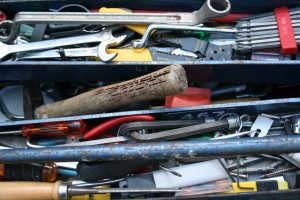3D printers can do a lot of amazing things, from printing prosthetics to simply making fun toys. But as the printers start to become more affordable and popular, it’s time to start asking the question: is an at-home 3D printer really a practical device?
The Limitations of Today’s 3D Printing Technology
The main problem with 3D printers like the Cube, which you can purchase at Staples, is that these printers only use plastic. And while being able to print plastic items is pretty cool, there’s only so much you can do with them. Many of the objects we use in day to day life are made from metal, cloth, rubber, or a variety of other materials. Even objects that use plastic in them need screws or other components that a 3D printer can’t fabricate.
Beyond the materials used, today’s 3D printers have a second limitation: you can’t print a complete, working object with moving parts. In order to build any thing more complicated than a solid plastic object, you need to know how to assemble the parts after they are printed.
Finally, any 3D printer is going to require a digital plan for the object to be printed. If you don’t know how to use 3D design programs, you have to rely on objects that have already been mapped out. Of course, as 3D printers become more popular, more and more digital plans are becoming available online. But at the moment, you have to make do with what you can find or design on your own.
When the Technology Becomes Practical
As we become more familiar with 3D printing technology, there’s one practical use that becomes more and more prevalent: the creation of replacement parts. LifeHacker notes that 3D printers make it easier than ever to repair appliances or machines that are no longer produced. Those tiny little plastic parts that are so vital to the machine’s workings are usually impossible to find – but with a 3D printer, you can make your own.
This use of the technology seems geared towards mechanical enthusiasts, who fix appliances either for work or for fun. But small replacement plastic parts can be handy around the house, too. You can print a plastic screw in a specific size, fix a cracked flashlight case, or even print out a small support for a wobbling table. The ability to design an object according to exact specifications means that you don’t just have to make do; you can come up with a perfect fix.
So, what do you think? Is it time to put a 3D printer in your house, or is the technology just not ready yet? Are 3D printers just for specialists, or can they have a place in your everyday life?

